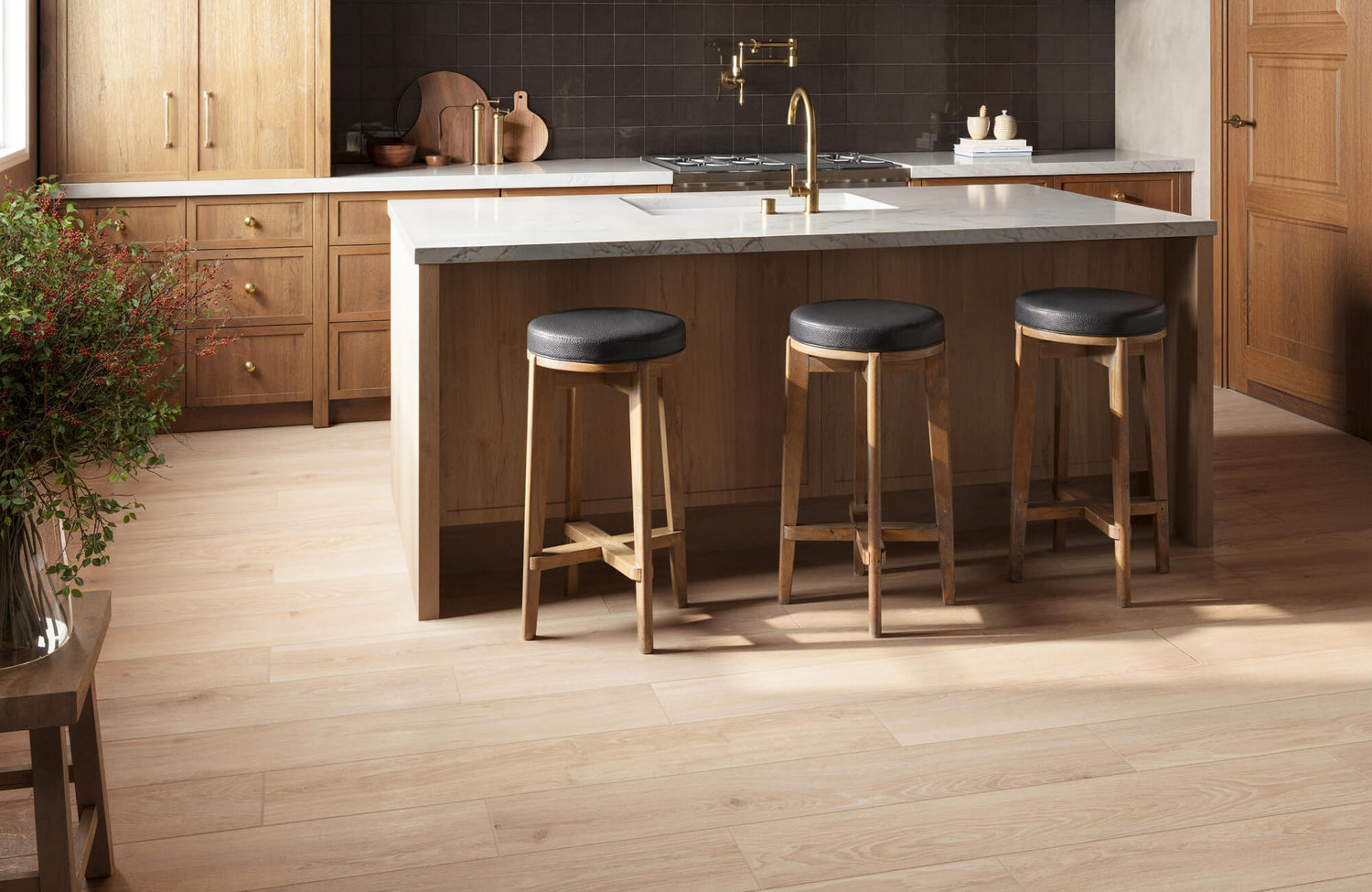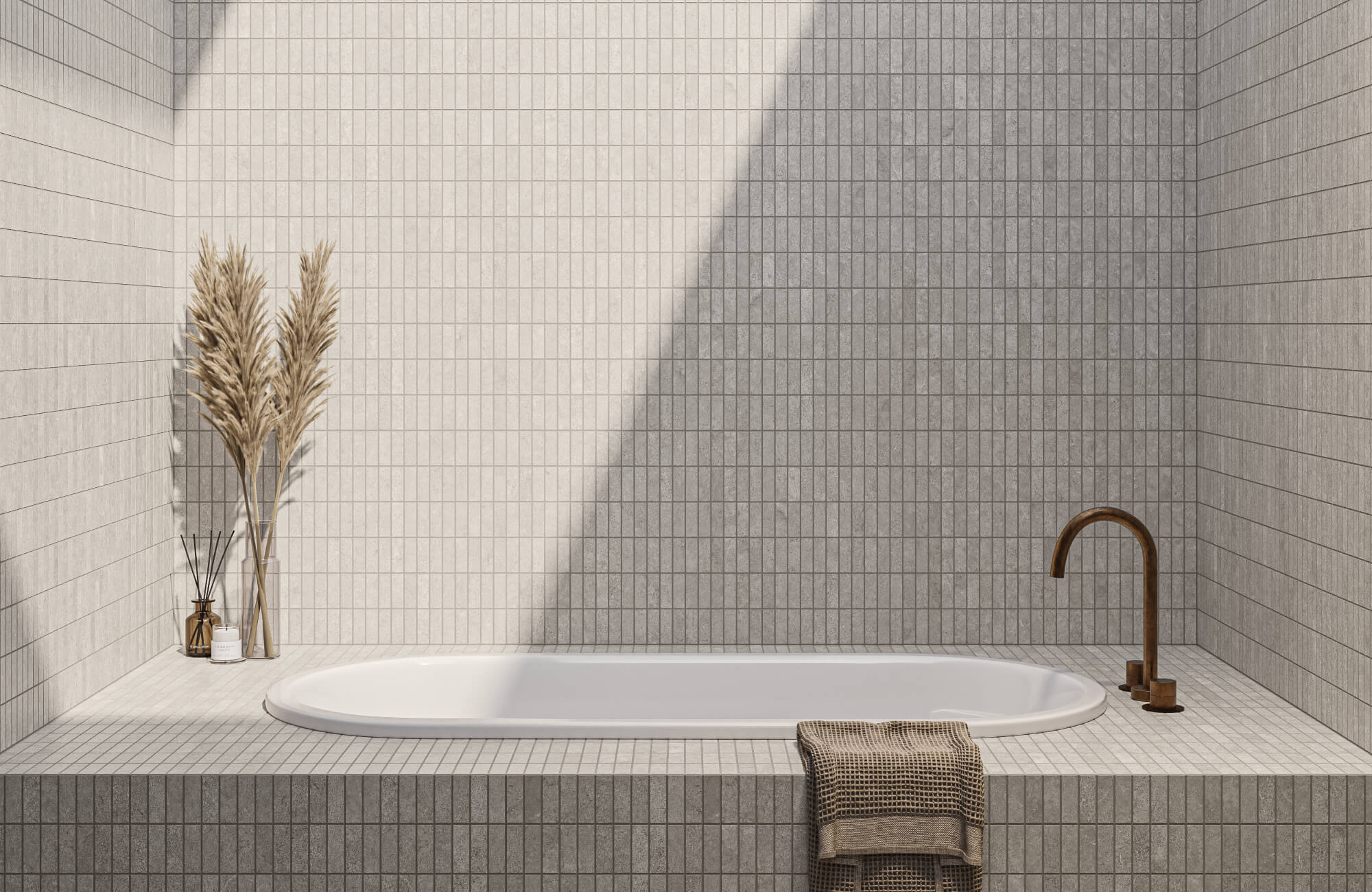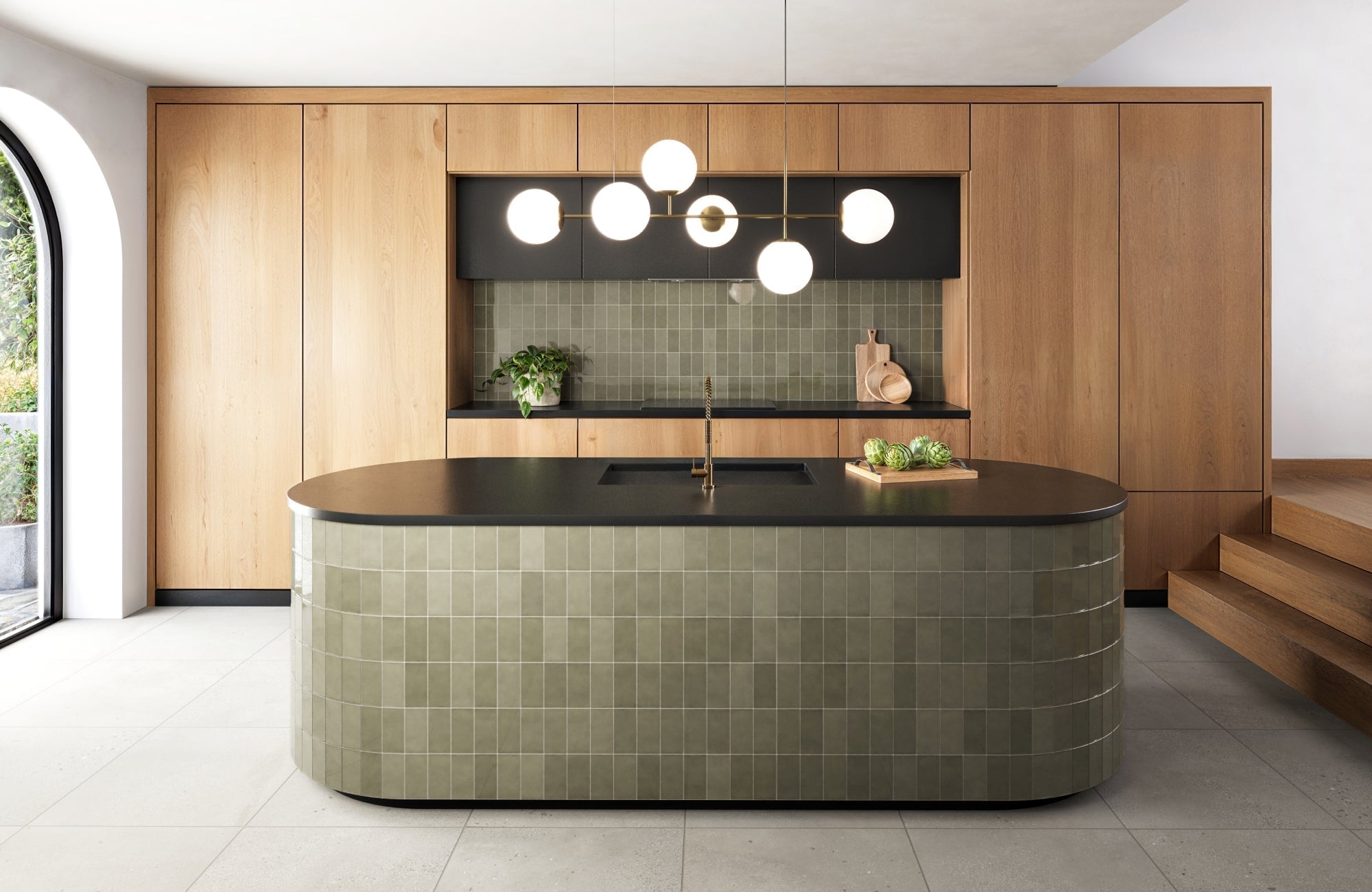Wood look tile has become a favorite flooring option for homeowners and designers, offering the warm, natural appeal of hardwood with the durability and easy maintenance of tile. Made from porcelain or ceramic, these tiles are highly resistant to moisture, scratches, and stains, making them a practical choice for busy areas like kitchens, and bathrooms.
Despite these advantages, some homeowners worry that wood look tiles are difficult to clean, particularly if they have textured surfaces that might trap dirt. The good news is that with the right cleaning techniques and tools, wood look tiles are one of the easiest flooring options to maintain. This guide will walk you through everything you need to know about cleaning and preserving these tiles, from choosing the right cleaning products to addressing common challenges like stains, textured surfaces, and grout maintenance.

Key Facts About Wood Look Tile Composition
The composition of wood look tiles plays a key role in how they resist dirt, stains, and moisture, which directly affects their maintenance. Choosing the right type of tile goes beyond aesthetics—factors such as material density, porosity, and texture determine the best cleaning methods and how much upkeep is required.
Porcelain vs Ceramic Composition
Understanding the differences between porcelain and ceramic tiles is essential when choosing a wood look tile that meets your durability and maintenance needs. Porcelain tiles are denser, less porous, and highly resistant to moisture, stains, and scratches, making them ideal for busy areas. A great example is the Jameson 8x48 Matte Porcelain Tile in Latte shown above, which combines durability with a warm, natural wood appearance, making it perfect for busy spaces like kitchens and living rooms, as shown above.
Ceramic wood like tiles on the other hand, while slightly more porous, still offer good durability and can be sealed for extra stain resistance in areas prone to spills. Edward Martin’s Zayne 12x36 Matte Ceramic Tile in Slat is an excellent choice for spaces where a stylish wood like design is desired but with a slightly softer composition than porcelain.
Another consideration is whether the tiles are glazed or unglazed. Glazed tiles have a protective coating that repels stains and makes cleaning easier, whereas unglazed tiles offer a more natural, matte look but may require more frequent maintenance to prevent dirt buildup.
Texture and Its Impact on Cleaning
The texture of wood like tiles affects how easily they can be cleaned. Smooth-finish tiles are simple to wipe down, while textured tiles, designed to mimic the grooves of natural wood, may trap dirt and dust more easily. Matte finishes also tend to show dirt more readily than glossy finishes, which naturally repel stains.
Tile size and layout also influence maintenance. Larger plank-style tiles have fewer grout lines, making them easier to keep clean. A great example is the Jameson 8x48 Matte Porcelain Tile in Camel, which offers an elegant wood like design with a matte finish while minimizing grout lines for easier upkeep. In contrast, smaller tiles with more grout lines require additional grout maintenance to prevent dirt buildup.

Choosing the Right Cleaning Products and Tools
Selecting the right cleaning products and tools is key to maintaining wood look tiles without damaging their surface or grout. pH-neutral tile cleaners are the safest option, as they effectively remove dirt and grime while preserving the tile’s finish. For those looking for an eco-friendly alternative, a mild dish soap and water solution can also be used. Harsh chemicals such as bleach, ammonia, or acidic cleaners should be avoided, as they can break down grout and cause the tile to lose its original luster. Always refer to the tile manufacturer’s recommendations to ensure the chosen cleaning solution is safe and effective.
The right tools also play a crucial role in preserving the appearance and longevity of wood look tiles. Microfiber mops are ideal for capturing dust and debris without scratching the surface, while soft-bristle brushes help remove dirt from textured tiles. Grout brushes are specifically designed to clean grout lines without causing damage. Using the proper tools not only makes cleaning more efficient but also helps maintain the integrity and beauty of your flooring for years to come.

Addressing Common Cleaning Challenges with Wood Look Tiles
Understanding how to properly address common cleaning concerns—such as tackling stubborn stains and preventing grime buildup—will not only preserve the appearance of your tile but also extend its longevity. By incorporating simple preventative measures and targeted cleaning methods, you can ensure that your wood appearing tile remains both stylish and easy to maintain for years to come.
Removing Stubborn Stains
Spills and stains, such as grease, ink, and dried paint, can often be removed with the right cleaning method. Grease and oil stains can be cleaned with a mild degreasing cleaner or dish soap diluted in warm water. For ink stains, rubbing alcohol or hydrogen peroxide works well—dab it onto a cloth and gently blot the stain instead of scrubbing, which could spread it. Dried paint should also be carefully scraped off with a plastic scraper, followed by a tile-safe cleaner to remove any residue.
For tougher stains, a baking soda and water paste can be applied and left for a few minutes before gently scrubbing with a soft brush. Always test any cleaner on a small, hidden area first to ensure it won’t affect the tile’s finish. The key to stain removal is acting quickly—clean spills as soon as they happen to prevent stains from setting in.
Dealing with Dirt Buildup in Textured Tiles
Textured tiles can add visual depth and character, but their grooves can also trap dirt and dust. To prevent buildup, vacuum or sweep regularly to remove loose debris before it settles. Dry mopping with a microfiber mop also helps capture fine dust that may collect on textured surfaces.
For deeper cleaning, a soft-bristled brush can lift dirt from textured areas, while a grout brush or damp cloth works well for spot cleaning. Placing entryway mats in busy areas can further reduce tracked-in dirt, making maintenance easier.
Grout Cleaning and Maintenance
Grout is more porous than tile, making it prone to dirt, grime, and discoloration over time. To keep grout looking clean, it’s essential to seal it regularly, typically once a year or as needed, to prevent moisture absorption and staining.
For routine cleaning, use a grout brush with a mild, pH-neutral cleaner to gently scrub away dirt. If stains persist, a baking soda and water paste or a hydrogen peroxide solution can lift grime without damaging the surrounding tile. Avoid harsh scrubbing pads or acidic cleaners, as they can break down grout over time. If grout becomes severely stained or deteriorated, professional deep cleaning or regrouting may be needed.
Since different grout types may have specific care requirements, always refer to the manufacturer’s recommendations for the safest and most effective cleaning methods.

Long-Term Care and Preservation
Keeping wood look tiles in top condition over time requires a consistent cleaning schedule and occasional professional maintenance. Establishing a regular cleaning routine also helps prevent dirt and grime from accumulating, while professional services can provide a deeper cleaning when needed.
Regular Cleaning Schedules
For busy households or frequently used areas, daily sweeping or dry mopping is recommended to keep floors looking their best. Mopping should be done weekly or as needed using a damp mop—avoiding excess moisture to preserve grout integrity.
Preventative measures also play a role in maintaining the tile’s longevity. Using felt pads on furniture legs helps prevent scuffs and scratches while keeping pet nails trimmed minimizes the risk of accidental damage. Sealing grout periodically—typically once a year—adds an extra layer of protection against moisture and staining.
Professional Cleaning Considerations
Even with regular upkeep, professional tile and grout cleaning can also help restore the tile’s original appearance. Over time, dirt can become embedded in textured surfaces and grout, making it difficult to remove with routine cleaning alone. Scheduling a deep cleaning once or twice a year, especially in busy households or commercial spaces, can effectively eliminate buildup and refresh the overall look of the flooring.
By following a consistent cleaning routine and incorporating periodic professional maintenance, wood look tiles can remain pristine and long-lasting, ensuring their beauty and durability for years to come.
Keeping Your Wood Look Tiles Pristine
So, are wood look tiles hard to clean? Not at all. Their durability, moisture resistance, and stain resistance make them a low-maintenance flooring option that requires no refinishing or special treatments—just simple, routine care to keep them looking their best.
With the right cleaning tools and quick spill management, maintaining wood look tiles is effortless. Using gentle cleaning products and microfiber tools helps preserve their finish and prevent buildup. Plus, choosing the right tile for your space has never been easier—use our AR tool to visualize different wood look tile designs in your home before making a decision. Want to experience the texture and quality firsthand? Order a sample for only $2 to find the perfect match for your style and needs.
If you're looking for the beauty of wood without the hassle, wood look tiles are a stylish, practical, and low-maintenance alternative that will stand the test of time.








